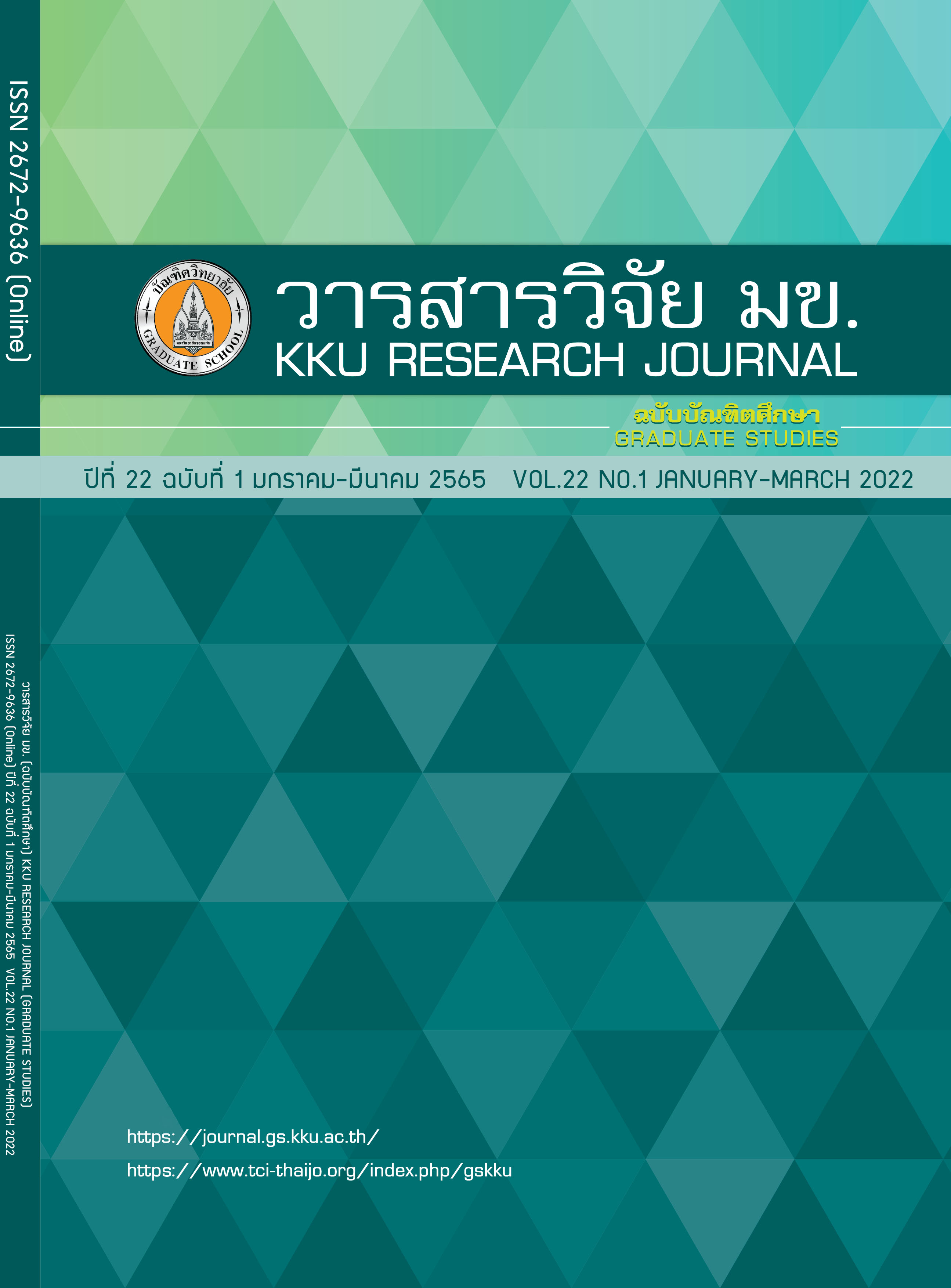Strength Properties of Lateritic Soil replaced by Bottom Ash
Keywords:
Bottom Ash, Compaction, CBRAbstract
The research aimed to study the strength properties of laterite soil replaced bottom ash. The bottom ash is a by-product from BLCP Power Co., Ltd., Rayong province and laterite soil is from Saraburi province. The grain size distribution of lateritic soil was graded according to the Department of Highways Standard, DOH 205/2532 Type B and Type D. The bottom ash replacement ratios are at 10, 20, 30, 40 and 50 percent for Type B and at 10, 20, 30, 40, 50 and 60 percent for Type D. The results showed that both types of lateritic soils had the maximum dry density tended to decrease with the bottom ash replacement ratio. On the opposite way the optimum water content increased with the bottom ash replacement ratio. For the strength properties, it was found that for Type B and Type D when replaced with bottom ash resulted in a higher CBR value to the optimum replacement ratio. After that, the CBR tends to decrease which means the bottom ash can improve the strength properties of lateritic soil. Compare to DOH standard for subbase material, the lateritic soil Type B and Type D can be replaced by bottom ash in the range of 30 – 50 percent for subbase material.
References
Chai J, Raungrut C. Use of Ground Bottom Ash as a Pozzolanic Material in Concrete. Research and Development Journal. 2003; 15(2): 1-8. Thai.
Manual for using Bottom Ash replacement fine Aggregates of Concrete. Thailand Concrete Association (TCA). 2016. Thai.
Cabrera M, Galvin AP, Agrela F, Carvajal MD, Ayuso J. Characterisation and technical feasibility of using biomass bottom ash for civil infrastructures.Construction and Building Materials.2014; 58, pp. 234-244.
Ronnapoom L, Prateep D. Improvement of lateritic soil by bottom ash and Typical Lime a BLCP Provider.The 15th National Convention on Civil Engineering. 2010; May 12 – 14; Ubon Ratchathani, Thailand.
Kittisak C. Improvement of Lateritic Soil by Bottom Ash and Lime. [M.Eng]. Bangkok: Kaseetsart University; 2013.Thai.
Nidapa P, Jutamath Y. The use of bottom ash mixed with lateritic soil for subbase. [B.Eng]. Phathumtani: Thammasat University; 2018.Thai.
Nunthawat S, Jirawat A. Stabilization of Lateritic Soil by Bottom Ash. Civil Engineering. [B.Eng]. Phathumtani: Thammasat University; 2018.Thai.
Balachowski L, Sikora S. Mechanical properties of bottom ash – dredge material mixtures in laboratory tests. Studia Geotechnica et Mechanica.2013; 35(3), pp. 3-11.
Cabrera M, Garcia JR, Ayuso J, Estaire J, Agrela F. Feasibility of using olive biomass bottom ash in the sub-bases of roads and rural paths. Construction and Building Materials.2018; 181 pp. 266-275.
Department of Highways. “Standard No. DH-S 205/2532 standard for subbase material” [Internet 2019 Jun 7 ; cite 2020 Nov 25]. Available www.doh.go.th/doh/images/aboutus/standard/01/dhs205-32.pdf
Thet Htet Ye Htun, Parnthep J, Weeraya C, Somnuk T. Use of Bottom Ash as a Subbase Material for Pavement. The 15th International Joint Symposium on Artificial Intelligence and Natural Language Processing (iSAINLP 2020) and The International Conference on Artificial Intelligence and Internet of Things (AIoT 2020); 2020 Nov 18 – 20; Bangkok, Thailand.
Onticha J. Possibility Study to Use Lateriric Soil Replaced by Bottom Ash as Highway Material. [M.Eng]. Phathumtani: Thammasat University; 2020.Thai.
Downloads
Published
Issue
Section
License
Copyright (c) 2022 KKU Research Journal (Graduate Studies)

This work is licensed under a Creative Commons Attribution-NonCommercial-NoDerivatives 4.0 International License.



